Top Announcements from Google Cloud Next 2025: Accelerating the AI-First Enterprise
What's New from Google Cloud Next 2025
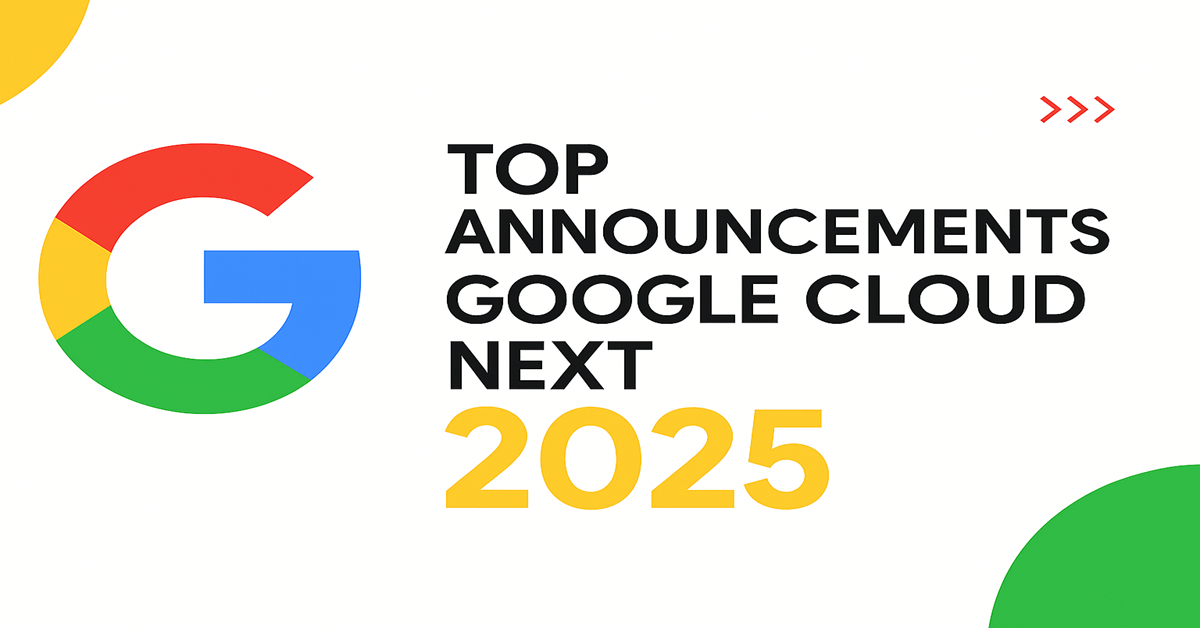
As businesses further their path toward digital maturity, Google Cloud Next 2025 has become a defining moment—an unveiling of capabilities that are not just intended to optimize cloud-native performance but to bring AI into operation across every level of the business. From autonomous agents to more intelligent developer tools, the announcements this year reflect Google's strategic direction: making AI more actionable, integrated, and enterprise-ready.
Here's a detailed rundown of the key announcements, with actionable analysis on how they're paving the way for the future of enterprise transformation.
1. Agent Development Kit (ADK): Blueprint for Creating Autonomous AI Agents
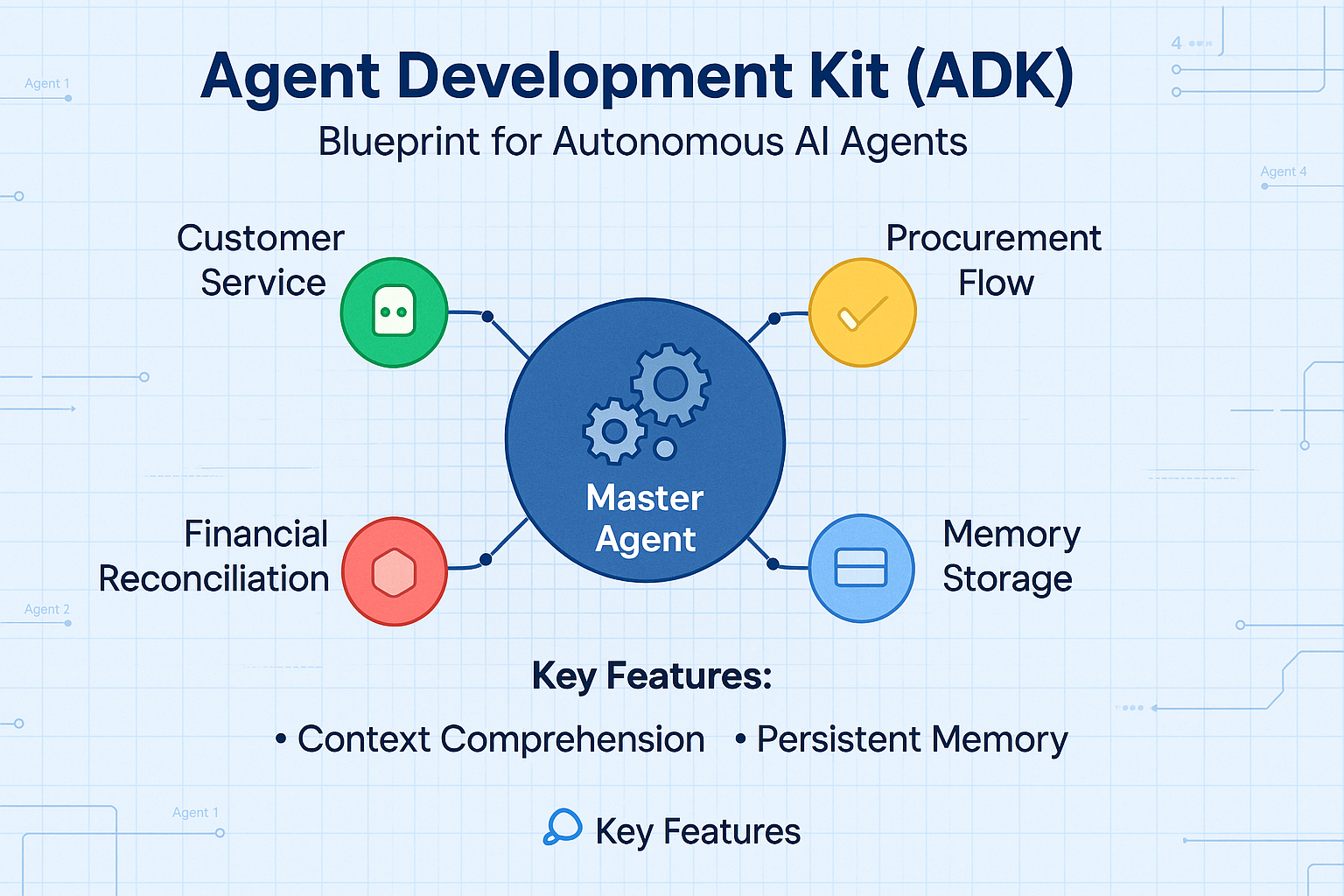
Among the top-line announcements was the availability of the Agent Development Kit (ADK), a platform for developing smart, independent software agents that can perform, reason, and interact in sophisticated enterprise environments. While automation scripts may do the bare minimum, agents developed with ADK can comprehend context, carry memory from one conversation to the next, and co-exist and work in concert with other agents or systems anything from customer service to procurement flows and financial reconciliations.
We had earlier discussed the importance of this tooling in our Smart AI Agents with Google Agent Development Kit blog, and in our technical deep dive on ADK features and tools of Google. This kit lies at the heart of how future multi-agent systems will be built, making agentic ecosystems possible which reflect human teams—robust, adaptive, and greatly autonomous.
2. A2A (Agent-to-Agent) Protocol: Real-Time Negotiation Between Agents
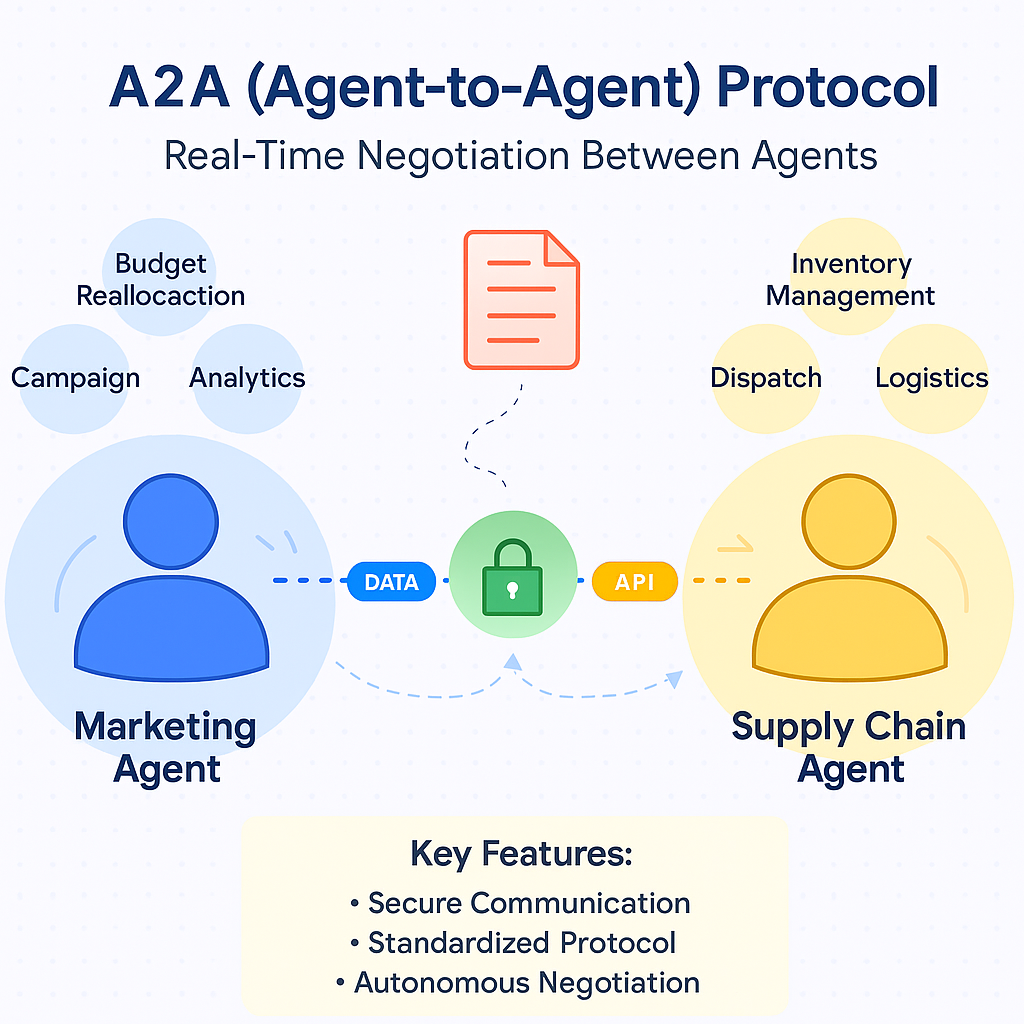
Google Cloud Next 2025 focused on Agent-to-Agent (A2A) Communication, an emerging protocol for allowing independent agents to converse, negotiate, and exchange data securely between workflows. This launch complements the ADK and sets up the scaffolding that is required by distributed decision-making systems.
In practice, this translates to marketing agents negotiating campaign budget reallocations with supply chain agents, or field service bots coordinating with inventory agents for real-time dispatch without a human controller. With LangChain already offering modular agent frameworks, the inclusion of A2A protocol minimizes friction in multi-agent deployments, providing a standardized and secure communication layer.
3. Vertex AI + Gemini 2.5: Unified Platform for Multimodal Intelligence
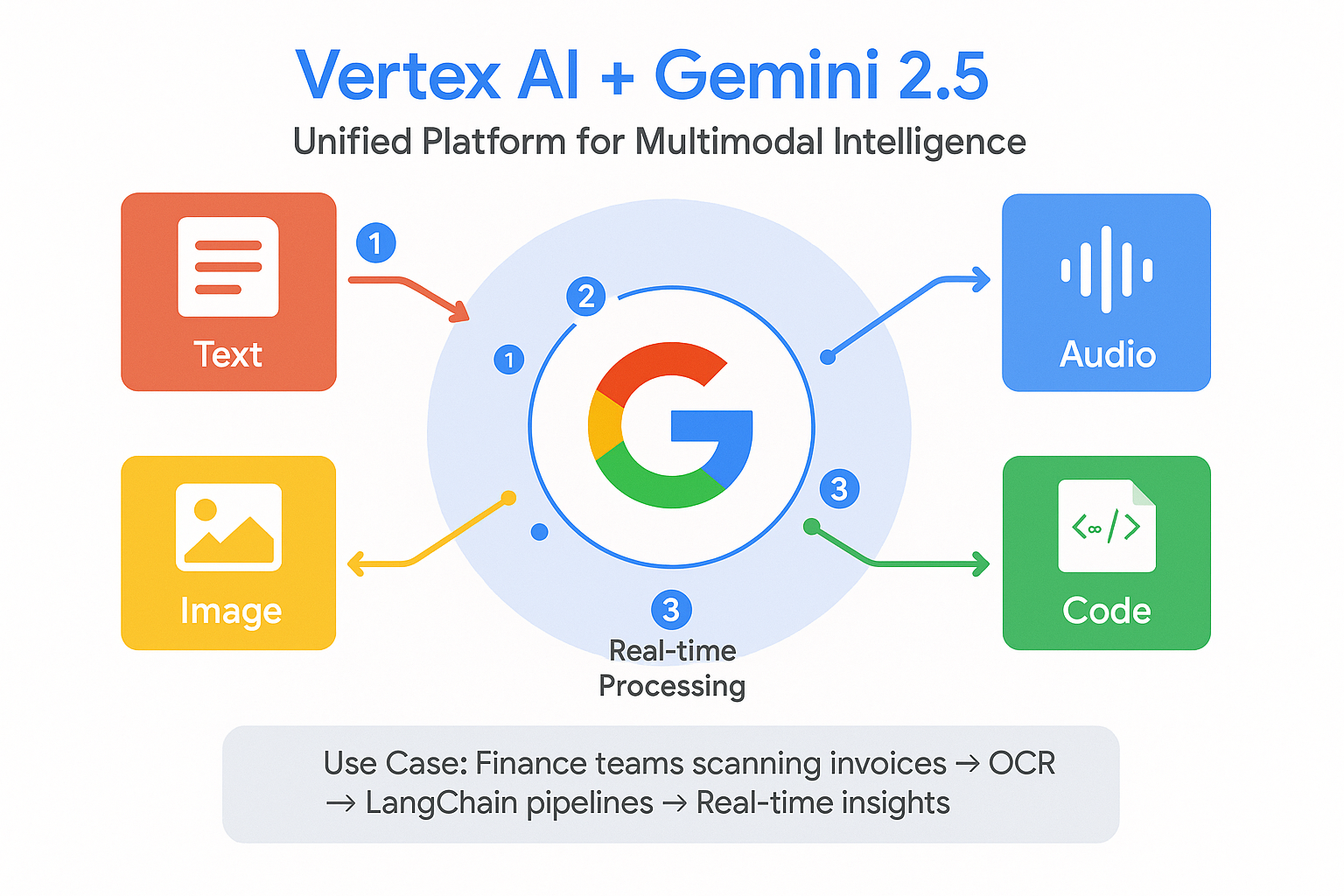
Google also introduced significant upgrades to Vertex AI, including Gemini 2.5—a cutting-edge foundation model with support for multimodal input types such as text, image, audio, and code. This means something monumental for developers and data teams: enterprise applications can now interpret and react to rich content forms without large pre-processing pipelines.
For example, this enables finance teams to scan invoices and process them through OCR, send them through LangChain-driven pipelines for document comprehension, and pull contextual meaning in real-time with Gemini all within a single platform. This vertically integrated experience accelerates time-to-insight and minimizes reliance on fragmented toolchains.
4. TPUv5p and New Ironwood TPUs: Scaling Foundation Models at Enterprise Grade
In order to enable increasing compute demand, Google introduced Ironwood TPUs (TPUv7) and ramped up TPUv5p deployment with much enhanced performance per watt. The chips are optimized for training and inference of billion-parameter models, enabling both real-time AI usage and long-horizon training workloads such as R&D simulations or risk modeling.
What's significant about this release isn't speed—it's operational convenience. Organizations can now use these TPUs through Vertex AI, which hides infrastructure complexity. For use cases such as automotive, pharma, and financial services, where huge AI models are the new norm, these TPUs eliminate performance bottlenecks without requiring deep ML ops investment.

5. Google Vids: Democratizing AI-Driven Video Creation
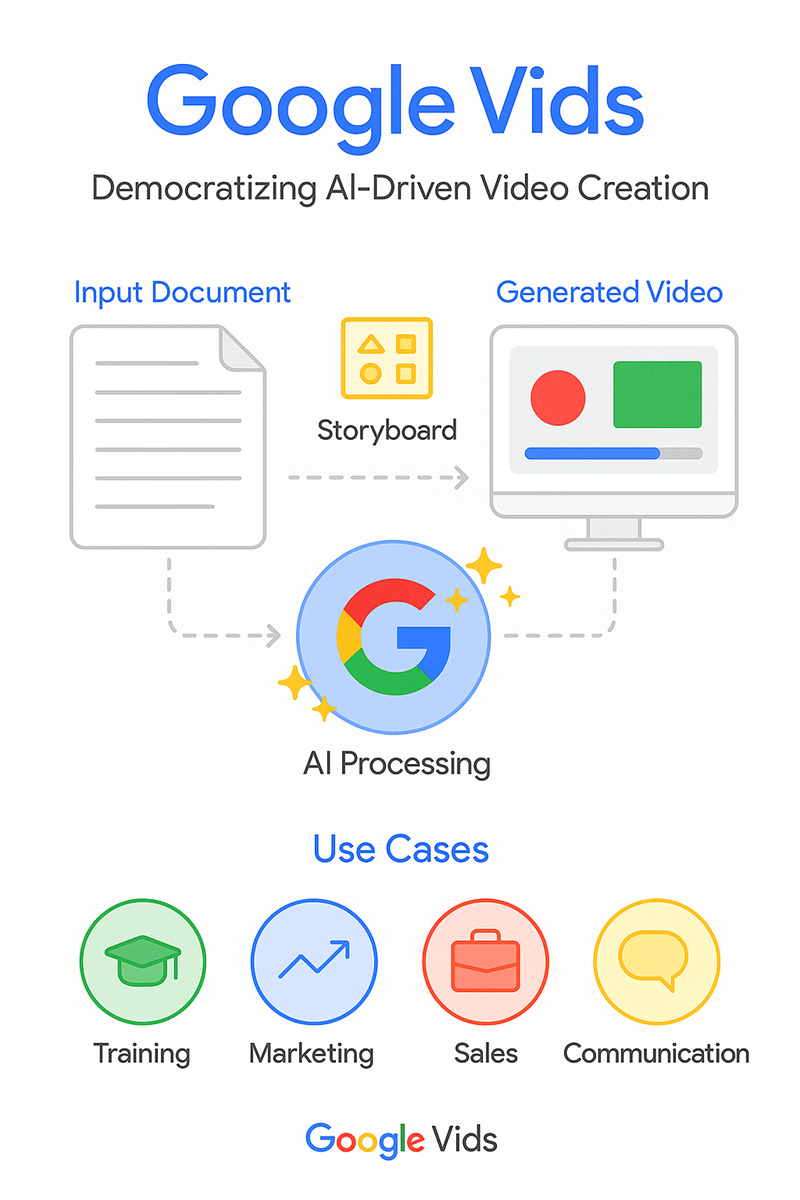
A surprising but compelling launch was Google Vids, an AI-based tool that creates storyboarded videos with minimal user input. Though framed as a creative tool, its influence reaches far into corporate training, marketing automation, and sales enablement.
Businesses can create training sessions for new products, pitch demos, or in-house communications—just by giving a document or cue. Built into the Workspace, this tool simplifies the creative process, saving thousands of dollars of agency or production fees, while ensuring consistency of brand and pace.
6. Chronicle + Gemini: Next-Gen AI-Powered Cybersecurity
Security was also a priority, and Google's bringing Gemini models into Chronicle—its threat intelligence platform—was a big leap forward. With this, Chronicle is now able to detect zero-day threats, model out-of-the-ordinary behavior, and suggest mitigation pathways in near-real-time.
This evolution is critical in industries such as banking and mission-critical infrastructure, where outages or intrusions lead to reputational and regulatory harm. Businesses receive proactive threat intelligence fueled by LLMs that see behind the static event logs into historic context.
7. Sovereign Cloud Expansion: More Control, More Compliance
Embracing increasing worldwide compliance demands, Google increased its Sovereign Cloud presence, introducing new areas in Europe, Canada, and Asia-Pacific. These areas provide better encryption, auditability, and data residency guarantee.
This news is particularly important to healthcare, financial, and government business. Organizations can now design AI and data systems with complete assurance that rules of data sovereignty will be adhered to—allowing more rapid adoption in markets that have been held up until now by legal ambiguity.
8. Gemini Code Assist: AI-Powered Help for Developers
Also launched was Gemini Code Assist, Google's software developer AI tool integrated into products such as Cloud Shell and Cloud Workstations. This feature includes context-aware code generation, refactoring, and even security auditing—making all developers power users.
From accelerating backend API development to improving infrastructure-as-code efficiency, Gemini Code Assist allows developers to code more, faster, and with lower bugs. Alongside Google Cloud's secure CI/CD pipelines, it integrates a DevSecOps-ready AI coding environment with cloud-native engineering teams.
9. Open Ecosystem Support: LangChain, AutoGen, and More
In a significant move, Google reaffirmed its support for open-source AI tools, including LangChain, AutoGen, and AgentOps. This alignment signals Google's strategy to remain ecosystem-friendly, letting enterprises choose the tooling that best fits their architecture.
For architects and developers, this translates into tighter integration of open-agent orchestration platforms and Google's native AI tooling. LangChain, for example, is now able to communicate more effectively with ADK-developed agents or run in A2A environments—creating the foundation for agentic architecture within enterprises.
10. Urban Mobility APIs and Smart Infrastructure Tools
Finally, Google introduced new APIs to enable cities and businesses to create intelligent mobility solutions—merging AI, Maps, and real-time sensor data. These are aimed at urban planners, logistics providers, and automakers creating autonomous vehicle infrastructure or optimized delivery networks.
Cities can use real-time traffic and demand forecasting models to deploy adaptive traffic signals, while private fleets can dynamically reroute depending on congestion and environmental conditions—enabling smarter and cleaner results.
Final Thoughts: Creating the Enterprise of Tomorrow, Today
The innovations announced at Google Cloud Next 2025 clearly indicate that AI is no longer experimental—it’s foundational. From autonomous agents to secure cloud infrastructures, these tools offer the building blocks for enterprises to become truly intelligent and resilient. Whether you’re designing agentic ecosystems, powering document workflows with Vertex AI, or deploying LangChain-powered orchestration, Google’s expanded ecosystem is ready to meet the scale and complexity of enterprise transformation.
To get the complete rundown of announcements, check out the Google Cloud Blog – Next '25
Transform Your Business with Google Cloud
Enterprise AI is no longer in the future. it's here now with innovation leaders like the Agent Development Kit, Vertex AI, and Gemini on the cutting edge. But to truly unlock their capabilities, you need the right expertise and advice.
As a Google Cloud transformation expert at Infoservices, we do it all from establishing secure and scalable cloud infrastructure to architecting AI-driven solutions for your business requirements.
- AI Agent Development
- Vertex AI Workflows & Data Intelligence
- Secure Cloud Migrations
- Industry-specific AI Integrations
Reach out to Us today to fuel your cloud journey with confidence

